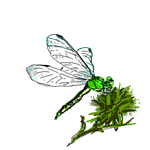Task
|
Each Quest Team will have 3 Research Partners: Decide Positions as a team. It is acceptable for any of these positions to be shared or switched among Partners if and when needed. All partners are expected to work cooperatively. |
| |
|---|---|---|
|
Director |
responsible for overall organization and coordination of the Quest and making sure the work is completed & all steps done on time | |
|
Recorder |
responsible for recording data, drawings, and identifying of critters, and the number found. | |
|
Technology Specialist |
responsible for any equipment and its use such as nets, & collecting trays in the field as well as microscope & camera in the lab | |
|
The following is the Proposed Work Schedule for
Our 2 Week Quest | |||||
|
WK |
M |
T |
W |
Th |
F |
|
Wk-1 |
OOPs = Orientation, Organization & Planning Engagement |
Collecting Trip to Stream Exploration |
Collecting Trip to Pond Exploration |
Identification KEY Exploration & Explanation |
Identification KEY Exploration & Explanation |
|
Wk-2 |
Field Guide Details Research Explanation |
Explanation |
Field Guide Construction Explanation |
Field Guide Construction Explanation & Evaluation |
Field Guide Construction Evaluation DUE |
|
The above work schedule can be flexible. However, plan to stick to the due date. | |||||

Research Research Biology Class ©2007 Mr. Cassis
In teams of three, you will first collect as many different kinds of critters during field trips to our local pond and stream. Remember that as your team collects, you will exhibit respect for the organisms and the environment.
Once you bring them back to our lab/classroom, you'll use our microscopes, cameras, and network-based reference materials to learn about and identify each different organism collected.
Finally, you will develop a Digital Field Guide by organizing all the information you have researched and collected into an interactive PowerPoint or KeyNote presentation.
By completing this process, you'll discover the answers to these two essential questions
- How do Scientists organize insects into groups? (Classification)
- How can the kind and number of macroinvertebrates tell us how good or bad the water quality is?